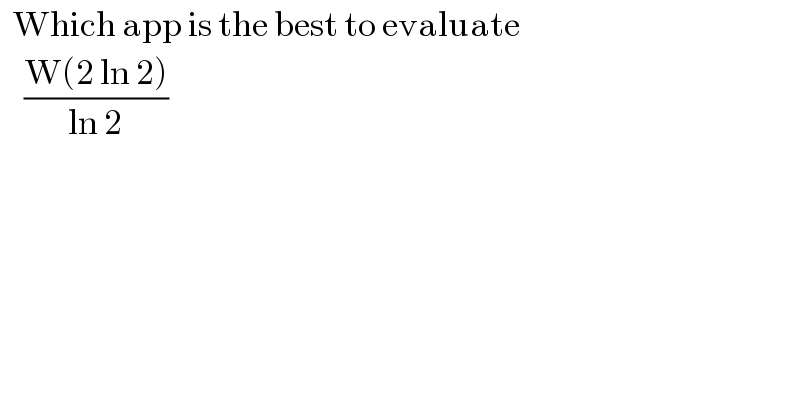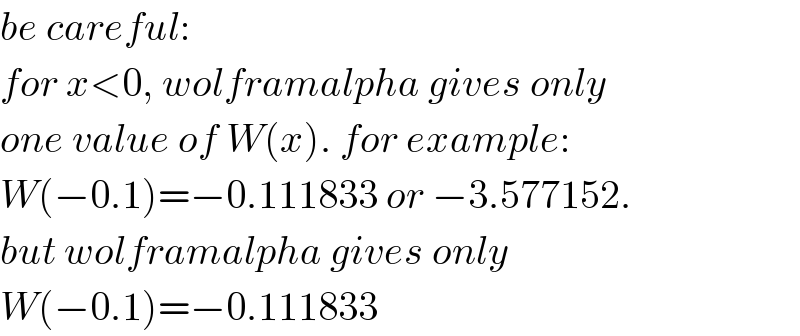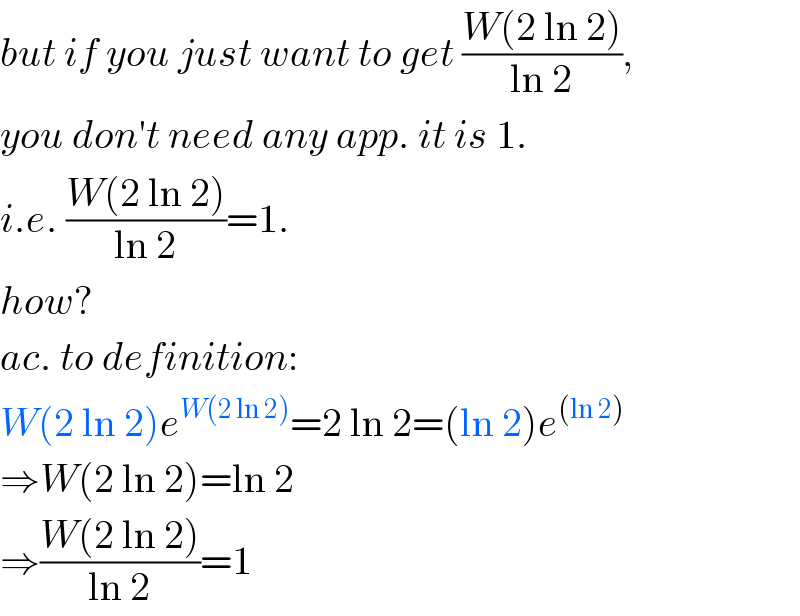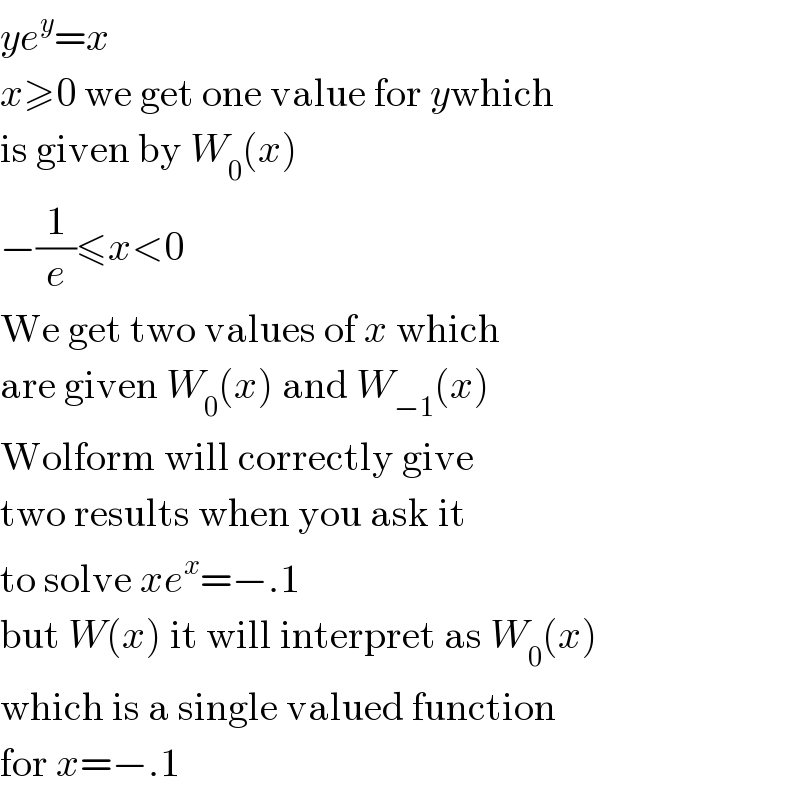
Question and Answers Forum
Question Number 93546 by allizzwell23 last updated on 13/May/20

Commented by IbrahimGR376 last updated on 13/May/20

Commented by prakash jain last updated on 13/May/20
https://www.wolframalpha.com
Commented by allizzwell23 last updated on 13/May/20

Commented by prakash jain last updated on 13/May/20
in wolfram alpha. You can simply write plain text W(2ln2)/ln2
Commented by allizzwell23 last updated on 13/May/20

Commented by prakash jain last updated on 13/May/20
Wolfram alpha is just plain text input
Commented by prakash jain last updated on 13/May/20
Wolfram will give alternate implementations of W. It will hive u options to select. for specific interpretations you can lambertw(2ln2)/ln2. or eta(5) or theta(5)
Commented by allizzwell23 last updated on 13/May/20

Commented by mr W last updated on 13/May/20

Commented by mr W last updated on 13/May/20

Commented by prakash jain last updated on 13/May/20

Commented by allizzwell23 last updated on 13/May/20

Commented by mr W last updated on 13/May/20

